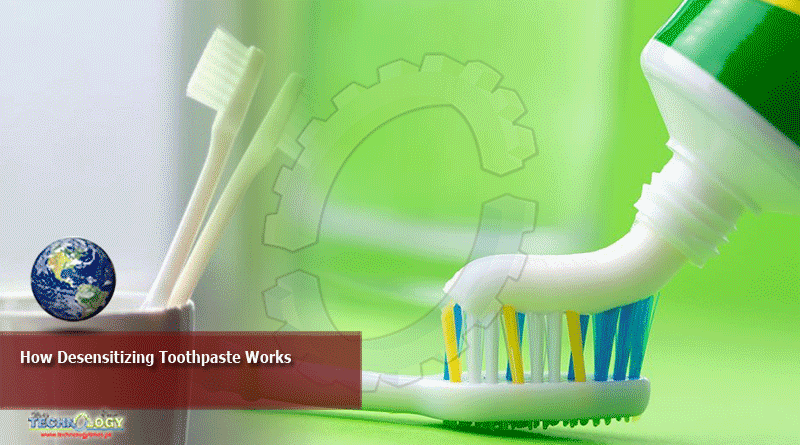This Is Where Desensitizing Toothpaste Can Help. Desensitizing Toothpaste Contains Active Ingredients That Block The Pain Signals…

that travel between the surface of the tooth and the sensory nerves inside.
Your teeth contain three layers:
- enamel
- dentin layer
- connective tissue layer called the pulp, or the center of the tooth that contains nerves, blood vessels, and connective tissue
Tooth sensitivity occurs when your enamel is worn down, exposing the dentin.
“Dentin contains tubules that travel to the nerve,” said Dr. Michaela Tozzi, doctor of dental medicine. “This breakdown of enamel over time can expose dentin, which can increase sensitivity to hot and cold.”
“This protects the tooth’s nerve from extreme sensations of hot/cold,” explained Tozzi.
Don’t expect relief to be immediate, though. Dr. William Graves, oral and maxillofacial surgeon and doctor of dental medicine, says that it can take up to a few weeks for the benefits of desensitizing toothpaste to take effect.
The ingredients matter
The effectiveness of desensitizing toothpaste largely depends on the ingredients inside the tube.
One 2018 studyTrusted Source involving 4,796 patients found that desensitizing toothpastes containing certain ingredients such as potassium and stannous fluoride relieved the symptoms of dentin sensitivity.
Some key ingredients found in most products include:
- Potassium nitrate. It’s the active ingredient that blocks the transmission of pain to the brain.
- Fluoride. It helps strengthen tooth enamel and acts as a protective layer.
- Strontium chloride. It blocks the openings of the dentinal tubules, making it so that stimuli such as hot and cold sensations aren’t able to reach the nerve.
There have been some concerns about strontium. High doses of strontium have been known to cause side effects such as headaches, diarrhea, and stomach pain, Tozzi says.
Research from 2013Trusted Source has found that strontium isn’t very effective in relieving symptoms of dentin hypersensitivity. Given the concerns about its safety, you won’t find it in all desensitizing toothpastes.
When to see a dentist
As effective as desensitizing toothpaste is, it only addresses the symptoms of teeth sensitivity.
If you’re dealing with sensitive teeth, this may be part of a larger issue — one that your dentist can assist you with.
“By seeing a dentist and having them evaluate your oral health, they can best discuss the problem and consequence, and present you with a solution,” said Dr. Lewis Chen, doctor of dental surgery.
Some underlying issues include:
- Weakened Enamel
- Cavities
- Recessed Gums
- Chipped Tooth
- Exposed Root Surfaces From Gum Recession
- Worn Dentition
- Excessive Acidic Beverage Consumption
If your teeth are becoming too sensitive, particularly as a result of desensitizing toothpaste not working, consult a dentist.
You should see a dentist as soon as possible if you experience swelling and extreme pain. Tozzi says these symptoms may mean that you may have an infected nerve or tooth.
Takeaway
The right desensitizing toothpaste can help minimize your tooth sensitivity. This will reduce pain and improve your quality of life.
Key ingredients in desensitizing toothpaste include potassium nitrate and fluorides. You may want to avoid products that contain strontium, as it has been linked to side effects and hasn’t been proven to help desensitize teeth.
Consult your dentist if your sensitivity worsens, even after using a desensitizing toothpaste. You should also visit your dentist if you experience pain, fever, or bleeding or notice swelling, as this could be an indication of something more serious.
This news was originally published at healthline.com
